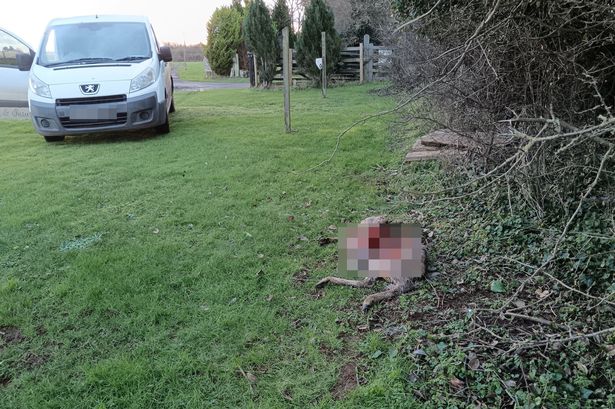The unsettling discovery of a mutilated deer carcass on a farm in Bradford-on-Avon, within the picturesque Cotswolds region, has sparked both concern and speculation. Farmer Jimmy Adams stumbled upon the grisly scene, finding the deer’s lifeless body with its internal organs seemingly ripped out. The graphic nature of the incident has left a deep impact on Mr. Adams and raised questions about the possible cause of the animal’s demise. The initial shock has given way to a search for answers, with various theories emerging, ranging from natural predation to more unusual explanations. This incident underscores the sometimes harsh realities of rural life, where encounters with wildlife mortality can be both unexpected and disturbing.
The idyllic image of the Cotswolds, often associated with rolling hills, charming villages, and tranquil landscapes, is starkly juxtaposed with the unsettling discovery on Mr. Adams’ farm. The incident serves as a reminder that beneath the veneer of rural tranquility, the natural world can be both beautiful and brutal. While the Cotswolds are renowned for their abundant wildlife, including deer populations, the discovery of the mutilated deer carcass highlights the vulnerability of these animals to predation and other natural threats. The incident raises questions about the delicate balance between human presence and wildlife in these shared environments, and the potential for conflict or unexpected encounters. The discovery has undoubtedly left an imprint on Mr. Adams, forcing a confrontation with the less idyllic aspects of rural life.
Several potential explanations for the deer’s condition are being considered. Predation by native carnivores, such as foxes or badgers, is a possibility, although the extent of the mutilation may suggest a more forceful or unusual event. While these predators are known to consume prey, the specific manner in which the deer’s internal organs were removed might not align with typical feeding patterns. Another possibility is scavenging by other wildlife after an initial cause of death. The carcass could have been partially consumed by a predator and further scavenged by smaller animals, leading to the observed state of mutilation. However, the apparent removal of internal organs raises questions about this explanation as well. The investigation into the cause remains ongoing, with further examination and analysis potentially providing more conclusive answers.
The incident has inevitably led to speculation within the local community. While natural explanations are being explored, the unusual nature of the mutilation has also fueled discussions about other possibilities. Some might consider more unusual scenarios, including cryptic wildlife activity or even human involvement, though there is no evidence at this stage to support such theories. It’s important to avoid jumping to conclusions without further investigation and analysis. The focus should remain on gathering evidence and exploring all plausible explanations before drawing definitive conclusions about the cause of the deer’s condition.
Furthermore, the incident highlights the importance of understanding and respecting wildlife in rural areas. Deer are a common sight in the Cotswolds, and their presence contributes to the ecological richness of the region. However, their presence can also lead to challenges, particularly for farmers whose crops or livestock might be affected by deer activity. This incident serves as a reminder of the complexities of coexisting with wildlife and the need for responsible management practices to ensure the well-being of both animals and human populations. It emphasizes the importance of education and awareness about local wildlife, including their behaviors, habitats, and potential risks.
Ultimately, the discovery of the mutilated deer carcass serves as a poignant reminder of the intricate and sometimes harsh realities of the natural world. While the Cotswolds often evoke images of picturesque tranquility, this incident reveals a different side of rural life, where encounters with wildlife mortality can be both unexpected and disturbing. The ongoing investigation will hopefully shed light on the specific cause of the deer’s death, but the incident also underscores the importance of respecting and understanding the natural world and its inherent complexities. The focus should remain on scientific investigation and evidence-based analysis to determine the most plausible explanation, allowing for a more informed understanding of the event and its implications for wildlife management in the area.














